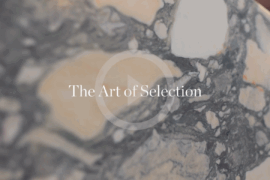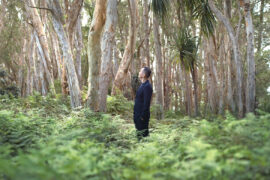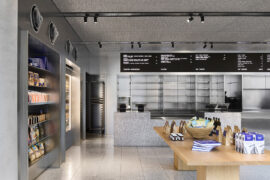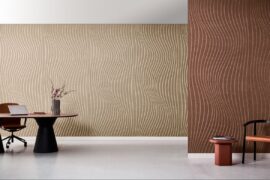Confusion surrounding sustainability, certifications and best practice is increasing exponentially. Here, we cut through the confusion and set the story straight.

Green Design has come a long way over the past five decades. In the mid-20th century, booming post-war economies and a strong global manufacturing industry gave way to unprecedented levels of consumerism, which prioritised the idea of more – more possessions, more buildings, more cities – over concerns for the environment.
For decades, development and production continued unchecked, and climate change, rising sea levels, and shrinking resource pools were little more than distant specks on the horizon.
By the time the United Nations Conference on Sustainable Development was held in Stockholm in June 1972, it was clear that this would not be the case for much longer. From the Buffalo Creek Flood Disaster – which saw 125 killed when a coal sludge spill swept through a West Virginian coal town – to the publication of the Club of Rome’s controversial ‘The Limits to Growth’ – one of the first studies to warn of the dangers of industrial output, pollution, and natural resource depletion – the year marked a major turning point in global conversations about the environment. For the first time, people around the world became aware of the potentially catastrophic effects of human activity, and took their first steps toward change.
In the years since the landmark conference, the Green Design movement has gained significant momentum. Around the world, designers and built environment professionals are investigating sustainable alternatives for design and construction, and sustainability values are now central to global design practice. Thanks to increasingly savvy consumers, an efficiency-driven construction industry, and precarious environmental conditions, Green Design is no longer a choice: it’s a necessity. And all this can be traced back to 1972, when a group of industry leaders got together and decided that it was time for change.
In Australia, environmental certification schemes fall into two categories: those for construction and fitout materials, and those for buildings, organisations, and urban planning projects.
Schemes for materials recognise construction and fitout products that meet specific performance and manufacturing standards. The Green Building Council of Australia (GBCA) currently recognises the following material certification schemes: the Environmental Certification Scheme of the Carpet Institute of Australia, Standard 150 of the Australasian Furnishing Research and Development Institute, the six standards of Good Environmental Choice Australia, SMaRT 4.0, and Ecospecifier Global GreenTag GreenRate.
Schemes for buildings assess the cumulative environmental effects of a building – including construction and fit out – during both construction and operation. The five building certification schemes currently recognised in Australia are: BASIX, EnviroDevelopment, Green Star, NABERS, and NatHERS.
Still unsure about the different certification schemes and what they all mean? Come down to FRONT to learn what you need to know about certification schemes and rating tools – and more.
The concept of Whole of Life Costing (WLC) is gaining ground in Australia, and for good reason. Instead of limiting cost considerations to the upfront price of a product or project, WLC prompts designers and specifiers to consider costs at all stages of the lifecycle from production to post-use. In doing, it encourages designers to think holistically about specification and prioritise long-term environmental and economic sustainability over a lower up front cost.
Visit FRONT to hear how industry leaders are using WLC to achieve environmental sustainability without sacrificing their bottom line.
With all the marketing hype surrounding Green Design and sustainability, greenwashing – the tendency of manufacturers to exaggerate the environmental performance of their product – is rife. Ensure that you have all the facts before making a specification decision: always be mindful of claims of environmental performance and ensure that they are backed up by testing or certification by an independent third party.
Coming to Sydney’s Carriageworks this 9-10 August, FRONT is a cross-disciplinary industry event like no other. Don’t miss out on an event that cuts through the noise and brings you exactly what you need to know to get ahead of the industry of tomorrow. Register to attend FRONT today.
INDESIGN is on instagram
Follow @indesignlive
A searchable and comprehensive guide for specifying leading products and their suppliers
Keep up to date with the latest and greatest from our industry BFF's!

CDK Stone’s Natasha Stengos takes us through its Alexandria Selection Centre, where stone choice becomes a sensory experience – from curated spaces, crafted details and a colour-organised selection floor.

London-based design duo Raw Edges have joined forces with Established & Sons and Tongue & Groove to introduce Wall to Wall – a hand-stained, “living collection” that transforms parquet flooring into a canvas of colour, pattern, and possibility.

In Naturalizing Architecture, Takada moves beyond biomimicry to propose a regenerative vision for the urban environment.

Architects Declare and Suppliers Declare are uniting with the aim of making transparent, responsible specification the new industry standard.
The internet never sleeps! Here's the stuff you might have missed

IF Architecture crafts Baker Bleu Cremorne into a refined, sustainable bakery and café where industrial design meets artisanal warmth.

In contemporary interiors, ensuring a sense of comfort and wellbeing means designing and specifying finishes and products that support all the senses.